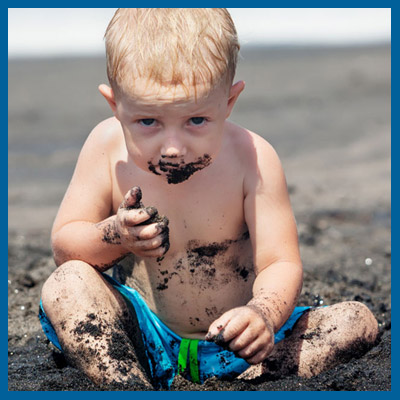

Pica is a compulsive eating disorder in which people eat nonfood items. Dirt, clay, and flaking paint are the most common items eaten. Less common items include glue, hair, cigarette ashes, and feces. The disorder is more common in children, affecting 10% to 30% of young children ages 1 to 6. It can also occur in children and adults with intellectual and developmental disabilities, such as autism. On rare occasions, pregnant women crave strange, nonfood items. For these women, pica often involves eating dirt and may be related to an iron and zinc deficiency.
Pica symptoms are related to the nonfood item he or she has eaten. They include:
These symptoms are the result of the toxic, poisonous, and bacterial content of the nonfood items. Repeatedly eating nonfood items over a period of time can cause:
The most common causes of pica include:
Pica cannot be prevented. Proper nutrition may help some children keep from developing it. If you pay close attention to eating habits and supervise children who tend to put things into their mouths, you may be able to catch the disorder early, before complications can happen. If your child has been diagnosed with pica, you can reduce his or her risk of eating nonfood items by keeping those items out of reach in your home. Be sure to monitor your child’s outside play, as wel
Antimonium crudum:
Craving for raw food and vegetables
Loss of appetite
Bloating of abdomen after eating
Inability to bear heat of sun, verse from over exertion in the sun and from over-heating
Aversion to cold bathing and aggravation therefrom
Tendency to grow fat
Thick milky white-coated tongue
Thirstlessness
Craving and intolerance for acids, pickles and bread
Peevish, irritable, cannot bear to be touched or looked at
Alumina:
Craving for starch, chalk, charcoal, cloves, coffee or tea grounds, raw rice, acids
Alumina is one of the chief antidotes for lead poisoning (complication of pica)
Thin delicate children
Dryness of mucus membranes and skin
Constipation, no desire for stools for number of days and soft stool requires great straining
Exhausted physically and mentally
Aversion to potatoes
Mild, cheerful disposition
Calcarea carbonica:
Craving for chalk, charcoal, coal and pencils
Chilly patient, takes cold easily
Fat, fair, flabby
Pale, weak, easily tired
Head sweats profusely while sleeping
Tendency for lymphatic glandular enlargement
Desire for eggs, aversion to meat and milk
Sour smelling discharges
Fearful, shy, timid, slow and sluggish
Longing for fresh air
Culcaria phosphorica:
Desires lime, slate, pencils, earth, chalk, clay etc
Colicky pain in abdomen while eating
Distended abdomen
Feeble digestion
Chilly patient, thin, emaciated, unable to stand, rickety
Easy perspiration
Slow in learning to walk
Aggravation from damp, cold weather, change of weather, mental exertion
Desires raw salt and smoked things
Restless, dissatisfied, desire to wander
Cicuta virosa:
Abnormal appetite for chalk, charcoal, coal, cabbage, which are relished
Grinding of teeth
Chilly patient
Convulsive with tendency to bend backward
History of suppressed skin eruptions
Stupid, singing, dancing, crazy, makes strange gestures
Natrum muriaticuam:
Craving for salt
Takes long time for food to digest
Worse from eating
Hot patient
Poorly nourished
Great emaciation (marked on neck), losing flesh while eating well
Oily, greasy face
Aversion to bread and fatty things
Nitricum acidum:
Craving for lime, slate, pencil, papers and charcoal
Cracks in muco-cutaneous junction especially fissures in rectum and corners of mouth
Chilly patient, takes cold easily
Thin built, sickly
Desires fat and salt
Disposed to diarrhoea
Strong smelling urine
Head-strong, irritable, fearful, vindictive, sensitive to noise and light
Nux vomica:
Craving for charcoal, pepper, chalk
Chilly patient, thin
Craves fats, spicy food
Tongue coated yellowish in the posterior part
Over sensitive to noise, odors, light or music
Nervous disposition
Quick, active, zealous and irritable
Impatient, spiteful with violent action
Silicea:
Craving for lime, sand, raw foods
Extremely chilly patient, all symptoms worse by cold except stomach complaints which are better by cold
Profuse, offensive discharges
Sweats profusely especially on feet
Easy suppuration, glandular affinity
Large head and distended abdomen
Weak ankles, slow in learning to walk
Obstinate, head strong, cries when spoken kindly to
Nervous, apprehensive, over sensitive, irritable, fearful,e.t.c